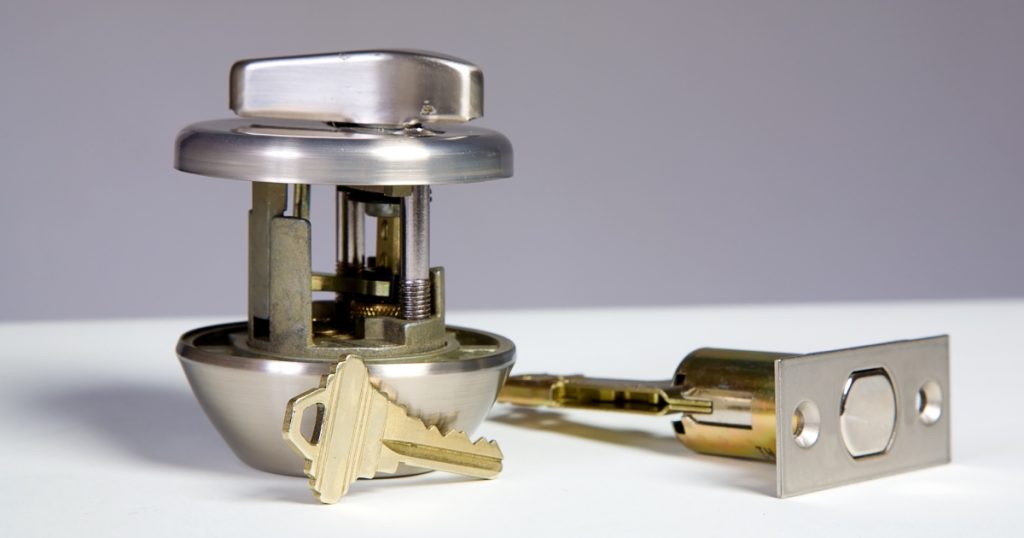Locks are an essential part of our everyday lives, ensuring that our homes, offices, and belongings remain safe and secure. Deadbolt locks, in particular, offer added security due to their robust design and resistance to forced entry.
However, there may come a time when you need to replace a deadbolt lock, whether it’s due to wear and tear, a lost key, or a desire for improved security.
In this comprehensive article, we will discuss the seven essential questions you should ask yourself before replacing your deadbolt lock. We’ll also provide insights into the different types of deadbolts available and tips for proper installation and maintenance.
Why do I need to replace my deadbolt lock?
- Wear and Tear
Over time, deadbolt locks can experience wear and tear from regular use. This can lead to a compromised lock, making it more susceptible to forced entry. Signs of wear and tear include difficulty turning the key, a loose lock cylinder, or visible damage to the lock’s components. If you notice any of these signs, it may be time to consider replacing your deadbolt lock.
- Lost or Stolen Keys
Losing your keys or having them stolen can be a significant security risk, as someone could potentially use them to gain unauthorized access to your property. In such cases, it’s wise to replace the deadbolt lock to ensure that your home or office remains secure.
- Security Concerns
If you’ve recently experienced a break-in or have concerns about the security of your current deadbolt lock, it may be time to consider an upgrade. Newer models often provide enhanced security features, such as improved resistance to forced entry and tampering.
What type of deadbolt lock should I choose?
- Single Cylinder Deadbolt
A single cylinder deadbolt is the most common type of deadbolt lock. It features a keyed cylinder on the exterior side of the door and a thumb-turn on the interior side. This type of deadbolt is suitable for most residential and commercial applications but may not be ideal for doors with glass panels, as an intruder could potentially break the glass and unlock the door using the thumb-turn.
- Double Cylinder Deadbolt
A double cylinder deadbolt requires a key on both the exterior and interior sides of the door. This type of deadbolt provides added security for doors with glass panels, as an intruder cannot unlock the door from the inside without a key.
However, double cylinder deadbolts can pose a safety concern in emergency situations, as occupants may struggle to exit the property without a key.
- Keyless Entry Deadbolt
Keyless entry deadbolts eliminate the need for a traditional key by using a keypad, fingerprint scanner, or smartphone app to unlock the door. These locks offer convenience and enhanced security, as you can easily change the access code or revoke access for specific users.
However, keyless entry deadbolts are typically more expensive than traditional deadbolts and may require regular battery replacements or a reliable power source.
What is the correct size and backset for my door?
Measuring the Backset
The backset is the distance from the edge of the door to the center of the lock’s hole. Before purchasing a new deadbolt lock, it’s essential to measure the backset to ensure compatibility with your door. Most residential doors have a backset of either 2 3/8 inches (60mm) or 2 3/4 inches (70mm), while commercial doors may have a backset of 3 3/4 inches (95mm) or more.
Choosing the Right Size Deadbolt
Deadbolt locks come in various sizes, typically referred to as their “bolt length” or “throw.” The most common size for residential deadbolts is a 1-inch (25mm) throw, which provides sufficient security for most applications. For added security, consider a deadbolt with a longer throw, such as 1 1/4 inches (32mm) or more.
How do I ensure proper installation?
DIY Installation
If you’re confident in your DIY skills, you can install a deadbolt lock yourself. Be sure to follow the manufacturer’s instructions carefully and use the correct tools for the job, such as a drill, hole saw, chisel, and screwdriver. Proper installation is crucial for ensuring the security and functionality of your deadbolt lock.
Hiring a Professional
If you’re unsure about installing a deadbolt lock yourself, it’s best to hire a professional locksmith. A locksmith will have the necessary tools and expertise to install your deadbolt lock correctly, ensuring optimal security and performance.
What is the security grading of the deadbolt lock?
ANSI/BHMA Grading System
The American National Standards Institute (ANSI) and Builders Hardware Manufacturers Association (BHMA) have established a grading system to assess the security, durability, and performance of door locks, including deadbolts.
This system assigns a grade of 1, 2, or 3, with Grade 1 offering the highest level of security and Grade 3 offering the lowest.
Understanding the Grades
When selecting a deadbolt lock, consider the ANSI/BHMA grade to ensure that you’re choosing a product with adequate security features. For residential applications, a Grade 2 deadbolt is often sufficient, while commercial properties and high-security areas may require a Grade 1 deadbolt.
How much should I spend on a deadbolt lock?
Balancing Quality and Budget
The cost of a deadbolt lock can vary significantly depending on the type, security grade, and additional features. While it’s essential to consider your budget, don’t sacrifice security for the sake of saving money.
A high-quality deadbolt lock is an investment in the safety and security of your property. Aim for a balance between quality and affordability, and consider spending a bit more for a lock with a higher security grade or additional features.
Additional Security Features
When determining how much to spend on a deadbolt lock, consider any additional security features that may be beneficial to your needs. Some deadbolts come with anti-tampering mechanisms, such as anti-pick pins or anti-drill plates, which provide added protection against forced entry.
Other deadbolts may be compatible with smart home systems, allowing you to monitor and control access remotely. Keep in mind that these features may come at a higher cost, but they can provide valuable peace of mind and enhanced security.
How can I maintain my deadbolt lock?
- Regular Cleaning
To prolong the life of your deadbolt lock and ensure optimal performance, clean it regularly by wiping down the exterior and interior surfaces with a damp cloth. Avoid using abrasive cleaners or chemicals, as they can damage the lock’s finish and internal components.
- Lubrication
Regular lubrication is essential for maintaining the smooth operation of your deadbolt lock. Apply a silicone-based lubricant or graphite powder to the keyway and bolt mechanism every six months or as needed. Avoid using oil-based lubricants, as they can attract dirt and debris, leading to poor lock performance.
- Periodic Inspection
Inspect your deadbolt lock periodically to identify any signs of wear and tear, damage, or tampering. If you notice any issues, address them promptly to ensure the continued security of your property. In some cases, this may involve tightening loose screws or replacing worn components, while in others, it may be necessary to replace the entire lock.
Conclusion
Replacing a deadbolt lock is an important decision that impacts the security and safety of your property.
By asking yourself these seven questions and considering factors such as the type of deadbolt, size and backset, proper installation, security grading, budget, and maintenance, you can make an informed choice and ensure the continued protection of your home or office.
Investing in a high-quality deadbolt lock is an investment in peace of mind, knowing that your property is well-secured against potential threats.

